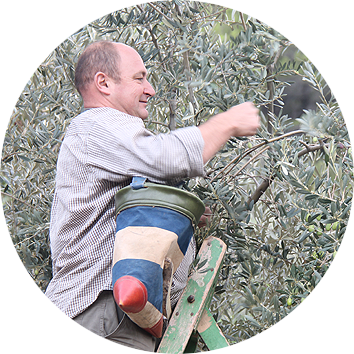Crop
For the Mallorca variety olive the only root that is used is the wild olive tree (Olea europea var. Sylvestris), an indigenous variety of the Mediterranean area present in this environment previous to the olive crop. Consequently, an ideal rootstock for its high rusticity, which is developed wild in Mallorca, giving rise to an excellent adaptation to the milieu.
The crop is mainly grown on terraces, small flat land in the mountain with retaining walls built by local craftsmen with dry stone, where rain is the only water contribution.
Traditionally, the agricultural holdings have been complemented with the presence of sheep and goat which have a three-fold action: elimination of weeds, elimination of shoots and contribution of organic fertilizer. Today, many developments have already incorporated the crushing of pruning residues as fertilizer and, in some cases this is supplemented with fertilizers that do not come from the actual development.
One pruning is carried out every one or two years which is complemented with an annual review of thinning of the olive trees, because it has been found that this practice helps to control the crop rotation.
The purpose of the pruning is to favour the circulation of the sap in all the branches, improve the ventilation and illumination and also clean up the tree by eliminating the parts affected by pests and diseases.
In addition, when the slopes and marges permit this, one or two tillings are carried out each year, depending on needs, to favour the infiltration of rainwater in the furrows and eliminate weeds.